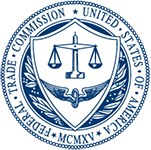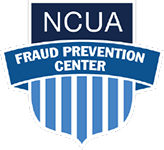Cyber crime is diverse in nature. But it always has similar results—stealing your hard-earned money, wreaking havoc on your credit, and creating unnecessary chaos for you and your finances. Identity theft is one of the most common types of cyber crime, costing U.S. consumers over $50 billion a year. In order to protect yourself from identity theft, you need to know the basics of cybersecurity.
What is Identity Theft?
Identity theft is when someone uses your personal or financial information without your permission. They might steal your name and address, credit card or bank account numbers, Social Security number, or medical insurance account numbers. And they could use them to:

Buy things with your credit cards

Get new credit cards in your name

Open a phone, electricity, or gas account in your name

Use your health insurance to get medical care
How to Spot Identity Theft

Review your bills for charges you didn’t make or for accounts you didn’t open.

Check your bank account statement for withdrawals you didn’t make or authorize.

Get and review your credit reports for new accounts or loans you don’t recognize.
Types of Cyber Crime and How They Occur
Phishing

Acquiring sensitive data through fraudulent solicitation in email or on a web site.
Spoofing

Disguising an email address, URL, or phone number to trick you into believing you’re interacting with a trusted source.
ATM Skimmers

Illegal devices installed on ATMs, gas pumps, and payment terminals that capture your pin number.
Healthcare Scams

Theft of your information to get care or make fraudulent claims.
Social Media and Wi-Fi

Scammers find and use your information from social media posts or steal it on public wi-fi networks.
Safeguard Your Information

Secure your financial records and any other documents that have personal information. And shred them when you’re ready to discard them.

If you get statements with personal information in the mail, take your mail out of the mailbox as soon as you can.

While some organizations like the IRS, your bank, or your employer need your Social Security number to identify you, they won’t call, email, or text you to ask for it. Always use caution and ask questions about why they’re requesting it, especially online.

Never log-in to financial accounts or share personally identifiable information such as your social security number, date of birth, address, or passwords on a public Wi-Fi network.

Add multi-factor authentication for accounts that offer it. These can be scans of your fingerprint, retina, or face, as well as a passcode that’s sent to your cell phone.
If you believe you’ve been the victim of identity theft, immediately report it to:

The Federal Trade Commission (FTC) online at IdentityTheft.gov or call 1.877.438.4338.

Contact your credit union or the National Credit Union Administration at https://mycreditunion.gov/consumer-assistance-center or call 1.800.755.1030.

The three major credit reporting agencies. Ask them to place fraud alerts and a credit freeze on your accounts.


